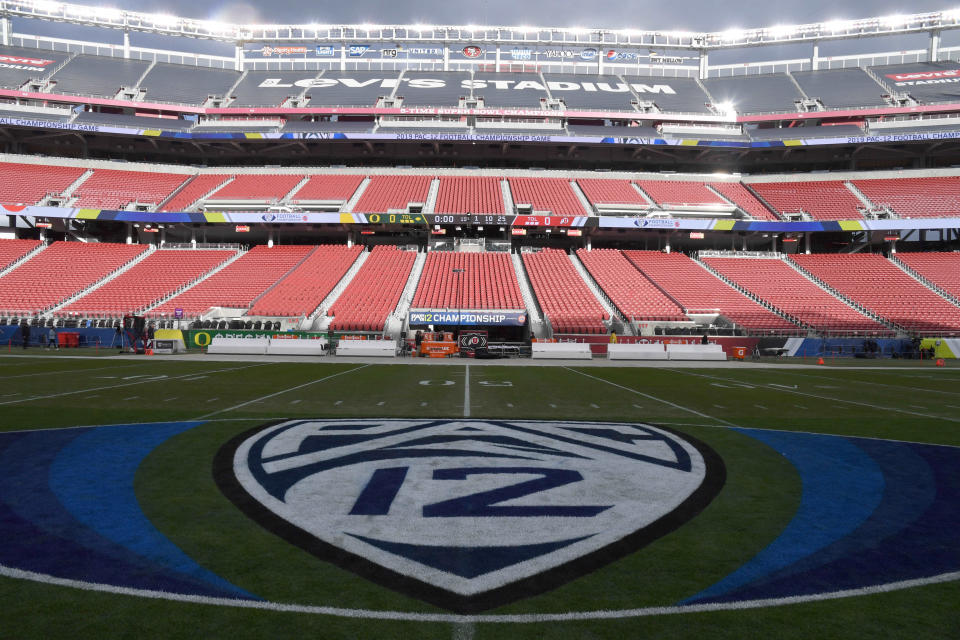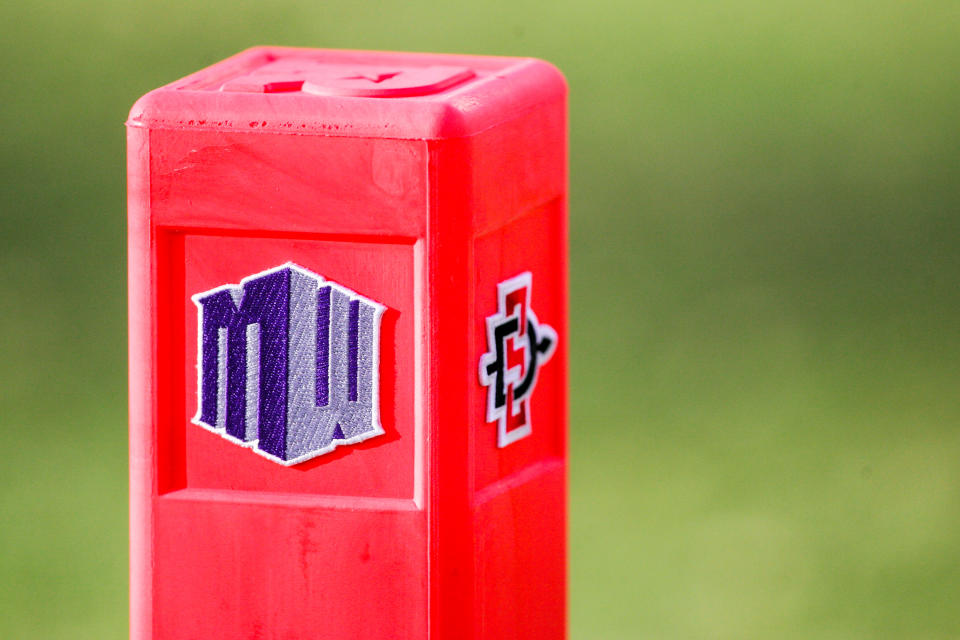After Big Ten decision, who's next? Pac-12? Mountain West? MAC?
In the wake of the Big Ten’s decision to play football in the fall of 2020, the reasons behind the switch can be tied to medical advancements, a confluence of outside pressures and the complexities of university hierarchies.
But as the Big Ten’s decision unfolded this week, it revealed that peer pressure is another indelible factor that’s reshaping the way conferences, schools and athletic departments are now approaching football in 2020.
The power of a full slate of college football being played on Saturday, with kickoffs from Austin to Ames and South Bend to Boone, has elicited a new feeling around college athletics — FOMO. That is, of course, Fear Of Missing Out.
And it has taken ahold of the Pac-12, Mountain West and MAC, which are all in various levels of discussion to see if they can follow the Big Ten and revive the hopes of playing at some point in the fall of 2020.
Here’s a granular look at the three leagues and their chances of coming back.

PAC-12
Presidents call: Friday
Earliest possible start date: Oct. 31
HOW DID WE GET HERE? USC officials started pushing behind the scenes soon after commissioner Larry Scott’s daily testing announcement on Sept. 3, sources told Yahoo Sports. There are myriad complications with state and county rules just for the California schools to have full practices.
What aided the process were the public letters from USC players, which were echoed around the Pac-12, about wanting to play. Those served as a catalyst to put pressure on public health officials and garnered the attention of California Gov. Gavin Newsom.
From there, the Big Ten’s decision put a renewed focus on the Pac-12. Newsom’s misguided public statements about the four California schools’ ability to practice ended up actually helping the league, as he got a flurry of bad headlines. That put a focus on the restrictions, which helped them get altered.
On Wednesday night, officials from USC and UCLA got on a Zoom call with Los Angeles County officials. In that call, county officials made it clear that they wouldn’t prevent the schools from practicing or playing and would defer to the state guidelines. That cleared an obstacle to play that had been in place for months.
More obstacles remain, including similar clearance in Northern California. But there’s been real momentum toward playing.
ISSUES: Local rules in Santa Clara County (Stanford) and Berkeley (Cal) are hurdles. Can they be cleared the same way the L.A. ones were cleared on Wednesday?
There’s consternation over the start date, making an Oct. 24 start to match the Big Ten unlikely. Some Pac-12 schools haven’t done any consistent workouts/conditioning/lifting for months. That means the risk of injury could be higher. “If it’s not going to be COVID, our players are going to get injured another way,” one Pac-12 source said. “The best way to get ready to play football is to play football.”
A majority of the coaches on a Pac-12 working group call on Thursday afternoon, however, said they could be ready in six weeks. It will be an interesting debate to find common ground there.
How would starting around Halloween and playing seven games, plus a title game, impact the Pac-12 in the playoff discussion? What’s the latest the Pac-12 could start and be a meaningful part of the playoff discussion?
The FOMO is real, with the Pac-12 presidents the only obstacle in returning. Considering the issues in that footprint with local regulations and the wildfires, the presidents approving this isn’t a certainty. There hasn’t been near the outcry as in the Big Ten — consider how active Ohio State president Kristina Johnson was compared to USC’s Carol Folt, for example. The momentum is there, but this won’t be a case of a group of presidents just rubber stamping an issue.

MOUNTAIN WEST
Presidents call: Sept. 25
Earliest possible start date: Oct. 24
HOW DID WE GET HERE? Commissioner Craig Thompson told Yahoo Sports the league is “continuing to discuss several options,” which include playing this fall.
For the Mountain West to revive its schedule, that would mean that the presidents would likely have to schedule a new call in the near future.
Momentum toward playing is picking up around the league, where a source said league officials are “cautiously optimistic” about putting together a plan for the fall.
Some of the local ordinances that are inhibiting the Pac-12 are in play in the Mountain West. But there’s real momentum, as the Mountain West ADs were on a call on Thursday afternoon discussing details.
ISSUES: The Mountain West has yet to broker a deal for daily rapid testing. It’s uncertain if one will be necessary for them to play, but considering that’s been the key to the Big Ten and Pac-12 return, it remains an elusive and important piece.
Thompson labels the local ordinance issues in California, similar to those the Pac-12 is facing, as a “wild card” in this. There are also COVID-19 protocols in Hawaii that would need to be loosened, but those appear to be on the way, according to comments from Gov. David Ige this week.
In order to play eight games and a championship, the MWC would have to start on Oct. 24. That’s important to be part of the New Year’s Six bowl game conversation. So that means a decision is needed soon and a president call would need to be put on the books.

MAC
Presidents call: Saturday
Earliest possible start: Oct. 24
HOW DID WE GET HERE? The MAC was the first FBS conference to pull out of the college football season back on Aug. 8. Could they re-enter the party?
We should find out Saturday, as one MAC source said it’s the “million-dollar question” whether the presidents and chancellors will vote on returning. The urgency for an immediate decision is being felt. “We cannot kick the tin can down the road here,” said a MAC source. “A week from now, we can’t still be talking about this. It’s a go or we play in the spring.”
The MAC pulled out so early that it didn’t establish a testing plan. Coming to some unanimity on that will be a big part of whether the presidents choose to reboot the MAC. (No politicians appear to be clamoring to help the MAC.)
Don’t underestimate the power of the Big Ten returning in the same footprint of the MAC. “I think they could get there,” the source said of the MAC presidents. “We know a little more about the virus. The MAC being the only league to play in the spring would not be a real positive. Let’s face it.”
The coaches are eager to get back on the field, as high school football is also being played throughout the MAC’s footprint and even in some of its stadiums. Kent State coach Sean Lewis came out and challenged the MAC, saying it “must revisit the decision.”
ISSUES: Finances are always an issue with the MAC. Not being able to play the “buy” games against Power Five schools proved devastating to the athletic department budgets and prompted deep cuts of both sports and athletic department employees throughout the league. Can the league find the money to address testing concerns?
More from Yahoo Sports:

